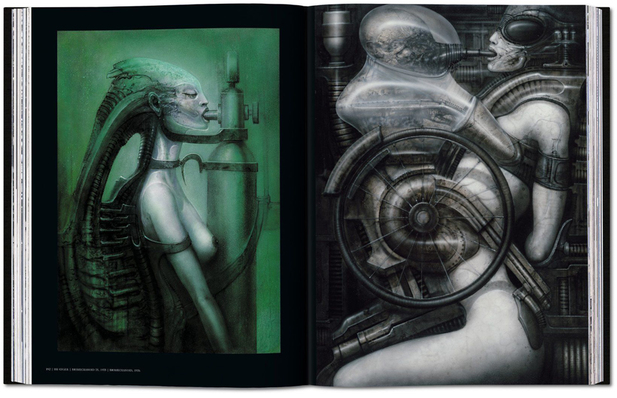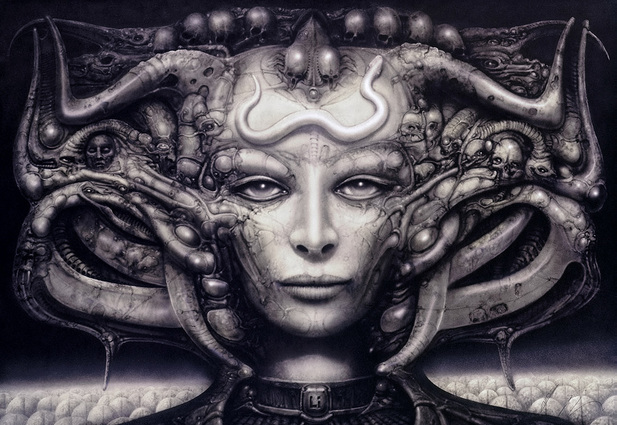Hans Rudolf Giger
Giger. His very name sounds like an alien. One of the greatest talents of the 20th century Hans Rudolf «Rüdi» Giger is the Swiss surrealist, whose design the titular monster in Ridley Scott’s Alien brought him the Oscar and forever changed science fiction.
Style and themes of art of Giger exist in his own fantastic reality. The artist created images in which combined human bodies and surrealistic mechanisms. He called the style «biomechanical» and many painters have earned to themselves popularity, recreating the worlds of HR Giger. Exclusively talented, better to say the man of extraordinary genius was in life the timid, modest and generous man, ideally coexisting with the Dark Universes. Otherworldly works of art and Xenomorph’s design, consolidated heritage of the artist forever. While many, who peer into Giger’s works, see only nightmares, the keen observer will see superlative beauty.
«Biomechanical» style was born from nightmares which he experienced, and art therapy, taken to combat sleeps disorders. It is fair to assume that this style became the reason of nightmares at others. «People are either thrilled or terrified by Giger’s art," said the Austrian artist Ernst Fuchs. «No one else knows how to depict the most horrific nightmares so stunningly beautifully." The novelist and the director Clive Barker observed: «Giger seems to be painting aliens, but the closer you look, the more you realize he’s painting twisted versions of us.»
Stanislav Grof, the pioneer in studying of «altered state of consciousness» and the founder of transpersonal psychology, in the unique essay «HR Giger and the Zeitgeist of the Twentieth Century» for the first time shows the visionary world of the artist in terms of transpersonal psychology. Giger’s works was analyzed in different variations, but his art is not considered from the point of view of social importance. Interpreting claustrophobia and dreadful aspects in Giger’s art, Grof opens new deeper understanding of works of the artist. For people, not familiar with the latest developments in the study of consciousness, Giger’s way to combine images seem illogical. But Giger’s understanding of the human psyche far surpasses the knowledge of many therapists. He looked for a source of the nightmares, visions and disturbing fantasies, and found, irrespective of pioneers of modern researches of consciousness and empirical psychotherapy, paramount importance of a patrimonial trauma.
Born in 1940 in Chur, Switzerland, “H.R. Giger grew up in very dark rooms having very dark dreams,” according to the 2011 book Alien Vault.
Plagued by nightmares through most of his life, Hans Ruedi Giger was encouraged by his mother to turn to art as a way of “self-psychiatry”; his father viewed art as a “breadless profession” and tried to dissuade him from becoming an artist. Nonetheless, Giger moved to Zürich and studied architecture and industrial design at the School of Applied Arts from 1962 to 1970.
The source of Giger’s signature style was in fact a night terror that the artist had before graduating: He found himself trapped in a Zürich bathroom as the walls around him turned into ruptured, pestilent skin, and demons stared at him through cracks in the wall. He called them “biomechanoids.”
Giger did not consider his work horrific. “Sometimes people only see horrible, terrible things in my paintings,” he said. “I tell them to look again, and they may see two elements in my paintings–the horrible things and the nice things. I like elegance. I like art nouveau; a stretched line or curve. These things are very much in the foreground of my work.”




